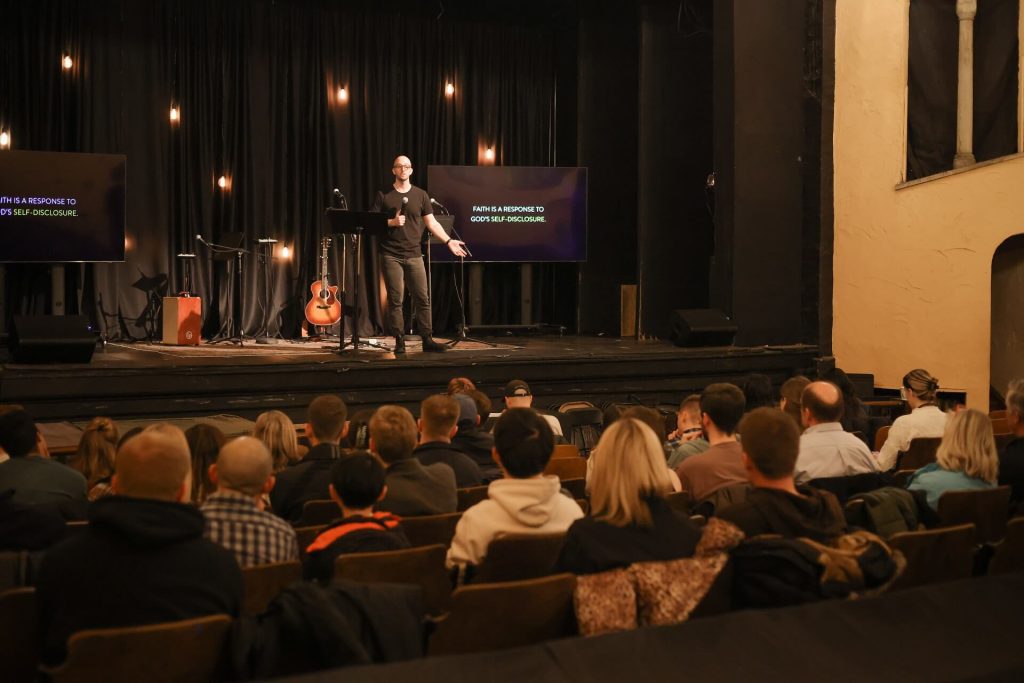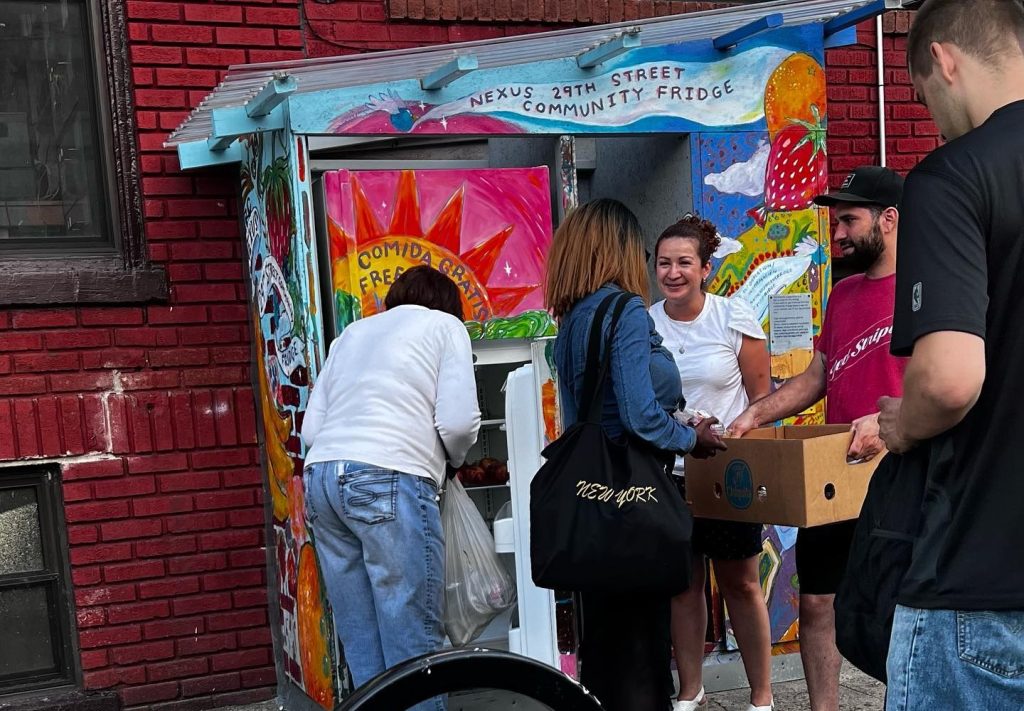What does it take to really understand the hopes and hurts of the people your church serves? City to City met with pastor José Humphreys to discuss this question and more over a plate of mofonguitos in East Harlem, New York City.
José Humphreys: One of the things I realized in the process is that I was so caught up in the forest that I didn’t see the trees. When I began to consciously assess my community, I realized there were a lot of things I had taken for granted, that I had framed certain assumptions by virtue of the fact I had spent so much time in a certain place that, for me, things were just what they had always been.
Can you give me an example?
For example, people in New York City tend to be fast-paced and highly driven. It’s just an assumption, but we never ask, What actually drives this? I wasn’t in tune with some of the cultural drivers that make this community what is. There’s a lot we take for granted sometimes, even as local people indigenous to our ‘hoods. We need to go through our own contextualization process, step away, and then step back in, and discern our community through the lens of the gospel.
What did you learn to see in East Harlem?
Over time we’ve discerned what spaces and places in the neighborhood, and spaces and places in our own hearts, need to be transformed by the gospel. Whether looking at larger systemic things like high school dropout rates or criminal justice; or personal ambition and our career-driveness, our penchant for the hurried pace of New York City — whatever it might be, we’ve learned we need to do the work of contextualization.
How would you define “contextualization”?
I would define contextualization as the ways we proclaim, profess, and perform the gospel story within a specific place at a specific time. We do that through our daily actions, so that the gospel is manifest in both word and deed through our lives — through the momentous and also the mundane.
That definition is pretty concrete.
That’s right. When we engage neighborhoods, people, systems, and structures, we allow the framing narrative of the gospel — of Jesus the Word of God becoming flesh — to take root in those realities, discerning the broken places and becoming whole neighbors working with God to repair the breaches of our specific neighborhoods.
Real contextualization takes a lot of discernment. We want to make sure we’re familiar with the suffering, the pain, the celebration, the beauty and the brokenness of a neighborhood, engaging it all through the good news of Jesus Christ.
What does the gospel have to do with contextualization?
Part of good, solid contextualization is having an expansive perspective of the gospel. Whenever I talk about contextualization, I also address people’s perspectives on the gospel because one influences the other.
If our gospel is solely about personal piety — about personal salvation and fire insurance (a free pass out of hell) — then what good news do we really have to offer our communities when it comes to engaging our current social realities?
In Luke 4, Jesus quotes Isaiah when he says I came to preach the good news to the poor and to the oppressed, to liberate the captive, to set free the prisoner, and to declare the year of the Lord’s favor. In that picture of Jesus’ induction into ministry, if you will, Jesus highlights both personal and social realities, and he casts them together seamlessly.
The Hebrew word shalom takes on this element of both harmony and wellness with God, and harmony and good standing with our neighbor. Those two things are not separate. When we talk about things like righteousness and justice, we’re talking about our personal wellness — God’s shalom working through us on this personal level — translating into wellness, harmony and flourishing extended to our neighbors, resulting in right relationship with our communities.
When we preach a more holistic gospel, when we think about it being a gospel of shalom (Ephesians 6:15), then contextualization becomes a natural extension of this gospel.
It sounds like the process of researching and engaging a community forces you to understand yourself better, too.
Contextualization is ultimately an act of incarnation. When you’re contextualizing, you’re showing up. When you show up, you’re showing up at a specific place, at a specific time. A person is never separated from the story of the community. So when a person shows up to a neighborhood, they’re not looking at things from an objective perspective. They are engaging a new story and an ecosystem. In this ecosystem, there are interrelated conditions. There’s culture, there are artifacts, there are stories, there’s people, there’s race, there’s ethnicity, there’s pain.
We have to ask ourselves, What story do I bring with my body? What story do I bring with my identity? What are the cultural classifications that society has given me, and how do people experience me in context? Knowing who is showing up and how we show up raises very specific questions. My questions as a brown, Hispanic male are going to be different than, let’s say, an Asian woman who is planting a church or a white man who is planting a church.
Thinking of contextualization as incarnation opens up all kinds of opportunities.
If there is an essential practice for contextualization, it is showing up with a posture of cultural humility. Cultural humility is following the example of Christ in Philippians 2, where Christ himself left glory and did not consider equality with God something to be achieved or attained, but he took on the form of a servant.
Jesus was a first-century, Palestinian Jew outside of the mainstream of Roman society, a rabbi who never probably travelled far out of his context. What that shows us is how the divine became provincial. Entering into a specific context, as The Message puts it, “the word of God became flesh and moved into neighborhood (John 1:14). Recognizing our intersection and showing up into a story with humility, is of utmost importance in contextualization.
Can you give us an example of what “cultural humility” looks like?
One example of cultural humility in church planting requires recognizing how our church planting approaches tend to be skewed toward the middle class and the educated. To address this reality, a planter has to dig through the silos that segment people, work to be in proximity, and become privy to a different vantage point.
For me, after seven years of ministry, this required crossing the Metro North [train tracks] on Park Avenue in East Harlem and working with Exodus Transitional Community, an organization that works with people returning home from prison. Being in sustained relationship with these fine people humbled me. I was humbled by their resiliency in the midst of the trauma and loss many of them had experienced. I was humbled by the way many of them have re-scripted their stories to live new lives as God’s image bearers. The next level of partnership is getting our church involved in the lives of these returning citizens. This is a process. It begins with assuming we have something to learn from our neighbors.

Let’s get a little more practical. Tell me about the work of contextualization.
When my wife and I got here, we realized that it was going to take a lot longer than we thought to plant this church. The discernment process would need to be deliberate, and part of contextualization would be a lot of self-reflection. We gave ourselves an opportunity to really embrace the neighborhood for the richness of culture that is East Harlem.
Every church planter won’t spend eight years researching a neighborhood, like we did. But it really does take an immersion, and an embodied presence in order to approach the community with this powerful story we call the gospel.
How do you get to know a community’s brokenness?
We get to know the community’s brokenness by taking on the practice of incarnational listening. By listening empathically when people are talking about, say, how the rent is too high, and they can no longer manage the multiple realities of living in the city — “If I make a rent payment, there might not be enough food on the table.” When a pastor who is contextualizing hears this, he’s going to ask, What is it that is disturbing the economic shalom of this neighborhood?
One of the causes — we know in a city like New York — is gentrification. We know that when gentrification takes root in a neighborhood, housing prices go up, the price of groceries go up, it becomes a lot more difficult for native, “indigenous,” people who live in those neighborhoods to thrive or even subsist there.
How do we find where God is at work in the neighborhood already?
We ask ourselves, Where is the image of God reflected here?
People often emphasize how we can see God’s image reflected through “high culture” and “art” — and I use high culture and art in quotes intentionally. But I know God’s image is reflected through so many of the community practices we often overlook. It could be the drummer’s circle here, where many of the West Africans gather and play rhythms to provide a healing space and a sense of fellowship. Sounds like the church, right? Or it could be the Puerto Ricans here in the barrio playing dominoes together, providing eldership and intergenerational spaces for the neighborhood. Those are hallmarks in the community. If we really look underneath the layers there, we can find a taste of heaven, the church’s hope that people of different tongues and nations will come together.
In our contextualizing, we want to honor those cultural practices, how the image of God is represented through the arts, food, tradition, through the local people and all of their distinct and specific narratives.
The word “honor” in Hebrew is related to the word “heavy.” To honor our neighborhood’s cultural practices, we need to ask, How do we ascribe a sense of weight to that which can be easily overlooked in our communities? In one sense the church takes on the role of curating a neighborhood narrative, which in East Harlem could mean pointing to the murals that tell stories about a place. Or the church can look to support the locally owned mom and pop restaurant, which is simply an extension of the owner’s family table. My church has invited local business owners to our Sunday gatherings, where we pray for them and, if it is their tradition, they might have communion with us as an extension of our table.
The task of contextualizing ministry may sound overwhelming. Where do you advise that people start?
Contextualization is a very profound process. The good news though, is it can also be integrated into the daily fabric of our lives and how we choose to live in communities intentionally.
I recommend getting to know more about the community through people’s experiences in the neighborhood. In particular, I look for people who have lived in the community at least for 20 years. From them, you get some of what the neighborhood used to be before it changed. Gentrifying neighborhoods go through rapid changes. Getting a historical panoramic from folks who have lived in the neighborhood for a substantial amount of time is very important.
Then engage people who have just arrived into the neighborhood, and get a sense of where their hearts are. Why is it that they chose to live in a specific neighborhood? In our case of East Harlem, was it their first choice? Was it because they couldn’t afford rent on the Upper West Side?
You also observe people’s patterns for the simplest things. Do you find that people shop outside of their neighborhoods mostly, or do they shop locally? A big part of our lives is driven by economics. Where people eat and invest reveals a deeper value that undergirds whole local cultures and communities.
If someone is planting in an affluent neighborhood, they’ll want to observe how people invest their resources. That way when they preach about things like tithes and offering and, as Jesus says, “Where our treasure, our hearts will be,” they’ll be able to address the idols and the attitudes that frame people’s thinking economically.
I’m contextualizing when I’m dropping my son off at the neighborhood school. Or I might be contextualizing as I’m taking a nice summer walk through my neighborhood and I’m seeing what homes are for sale and for how much. I’m observing the scaffolding on the apartment building, which signifies that something is being restored, repaired, it’s going to go into the market and housing prices are going to go up in this neighborhood. I’m constantly analyzing. Contextualization therefore, is not a one-time event. Contextualization is an ongoing practice because neighborhoods are constantly changing. We are constantly changing. We’re constantly seeing things we didn’t see before in our neighborhoods.
How might this process change what you do during the week to connect with your congregation?
We recognize that our Sunday gatherings are an opportunity to address larger questions through the vehicle of ministry and programming. We have to create a space for people to encounter Christ and the good news. But it’s not only that. I use the football illustration: we huddle and we break. People want to know what happens after the church breaks, and how people’s attitudes and postures as they go into their own neighborhoods are going to change. That’s where the gospel meets the road, so to speak.
So the questions that I ask as a pastor, along with our church’s leadership, might be: Is our liturgy contextual? Does our liturgy speak specifically to our social reality? How is our church gathering on Sunday going to address people’s larger questions about life, and address the needs they have, so that the gospel can become the framing narrative in their lives after the benediction, when they return to their neighborhoods?
Can you give us an example of what this might look like?
On March 12th, 2014, there was a building explosion here in East Harlem. Several families lost their lives. I went out into the neighborhood. I volunteered with the Red Cross, and I also provided chaplaincy. I ended up at a funeral home, spontaneously doing the eulogy, because I was part of the fabric of what was happening at the time.
That Sunday we had to think about connecting what was happening in the neighborhood on the ground to our specific gathering. We could easily have sung songs and anesthetized ourselves from the pain of our community. Or we could incorporate into our liturgy some of the grief and peoples’ experiences of loss.
When we were able to do that, a couple of things happened. The ground of people’s hearts became open to caring about community pain. We grieved with those who grieved. Our compassion reflex was put into practice, because we were raising money and mobilizing resources for people who had lost their homes. We were able to extend hospitality as an extension of the liturgy, because the liturgy was shaped in conversation with the neighborhood and the community.
The church service itself does not operate in a vacuum. We realize that through worship, through liturgy, through song, and through preaching, we’re constantly in dialogue with our neighborhoods, ensuring that we’re sensitive to the spirit, that we’re faithful to the gospel, and that we’re allowing God’s transformative work to reach into the deep, broken places.
We become what Isaiah spoke about in his encouragement to the people of Israel — that they would become the “repairers of the breaches” (Isaiah 58:12), and deep contextualization does that. It allows us to assess and discern what the breaches are and how we, as practitioners of this embodied gospel, can enter and offer words of hope and healing while waiting on the transformative power of the Spirit to bring shalom to neighborhoods in need.



